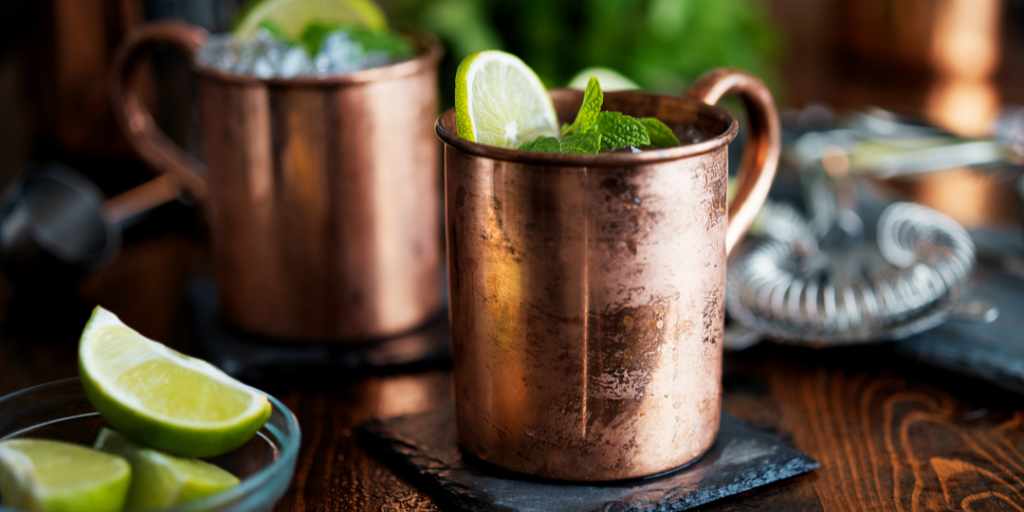In crafting the perfect cocktail or beverage, the role of ice cannot be overstated. While it might appear to be just a means to chill a drink, the type, shape, and size of ice significantly affect both the served drink’s aesthetics and flavour profile. From keeping drinks cold to controlling dilution, ice is an essential element in the art of mixology and the pleasure of casual drinking.
Key Takeaways
- Ice plays a crucial role in the temperature and dilution control of beverages, affecting flavour and presentation.
- The selection of ice type should correspond with the intended beverage and glassware to optimize the drinking experience.
- Knowledge of ice crafting and the required tools can enhance beverage quality, professionally or at home.
Understanding the Basics of Ice for Drinks
Ice serves two primary purposes in drinks: controlling temperature and managing dilution. Its use is as much a science as an art, essential for achieving the perfect balance in cocktails and spirits.
Types of Ice
Ice comes in various forms, each tailored for different beverage needs. Common types of ice for drinks include:
- Standard Cubes: These are typically 1-inch cubes that fit well in most glasses and are the go-to for many cocktail recipes.
- Large Cubes or Spheres: Ideal for spirit-forward cocktails, they melt slower, reducing dilution and keeping the focus on the spirits.
- Crushed Ice: Favored for its quick chilling effect, it’s often used in juleps and swizzles.
- Collins Spears: Tall, slender blocks designed for highball and Collins glasses to keep your drink chilled without it becoming too watery.
Role of Ice in Cocktails and Spirits
The choice of ice can significantly influence the drink’s temperature and flavour profile:
- Cocktail Preparation: In cocktails, ice is used during shaking or stirring to chill and combine ingredients, contributing to the drink’s texture.
- In the Glass: Post-preparation, ice maintains a drink’s temperature and ensures a slow dilution that can be crucial for the full enjoyment of spirit-forward drinks.
By understanding these basics, one can enhance their beverage experience by selecting the optimal ice type for their drink of choice.
Choosing the Right Ice for Your Drink
Selecting the appropriate ice is crucial for enhancing both the presentation and the flavour profile of a beverage. The ice’s size, shape, and clarity all contribute to the overall drinking experience, dictating how quickly a drink might dilute and striking the right visual appeal.
Size and Shape Considerations
Large Cubes: Ideal for drinks that require slow dilution, large ice cubes have a reduced surface area, which slows down melting. They’re perfect for sipping spirits like whiskey or Scotch where minimal water addition is desired.
Small ice cubes or crushed ice: These increase the surface area in contact with the drink and are preferred for rapid chilling. Small ice cubes or crushed ice are most suitable for cocktails that benefit from quick dilution, such as Mojitos or Mint Juleps.
Ice Balls or Spheres: Ice balls are another fantastic choice for minimising dilution due to their volume and lower surface area relative to their mass. They provide the aesthetic advantage for cocktails served in a glass where the ice is visible.
Ice Clarity: Clear vs. Cloudy Ice
Clear Ice: It’s not just about looks; clear ice is denser and thus melts more slowly than cloudy ice, making it the preferred choice for quality cocktails. The absence of impurities ensures that the focus remains on the drink’s flavours.
Cloudy Ice: Cloudy ice indicates the presence of impurities and trapped air, leading to faster dilution. While suitable for casual drinks, it can be less preferable for high-end cocktails where the dilution could overpower the drink’s intricacies.
Specialty Ice Types
Crushed Ice: With a greater surface area, crushed ice chills drinks quickly and is ideal for frozen drinks and cocktails that embrace dilution, such as slushies or cobblers.
Spears or Sticks: These are typically used in highball glasses to cool without overwhelming the glass. They can complement a Carbonated Highball or Tom Collins.
Choosing the right type of ice for a cocktail isn’t just a practical decision; it’s an essential aspect of cocktail crafting. Each type of ice serves a different purpose, whether it’s to chill, dilute, or simply to add a visual flair to the drink.
Ice for Various Glassware and Drinks
In crafting cocktails, the selection of ice plays a pivotal role in both the presentation and the physical qualities of the beverage, such as temperature and dilution rate.
Matching Ice to Glass Types
For one-inch cubes, a standard in most bars, the cocktail glass and lowball glass provide an ideal showcase. These cubes offer a balance between chilling the drink and controlling dilution. They fit comfortably in these glasses, maintaining the integrity of the spirit without overwhelming the space.
The larger two-inch cubes, however, are better suited for a rock glass. Their size allows them to chill the drink quickly while melting slowly, making them perfect for sipping spirits without excessive dilution.
A tall glass—commonly a Collins glass—is preferred when serving highball drinks. This elongated glassware accommodates smaller or narrower ice-like crescent shapes that chill rapidly and suit the lengthy nature of the drink.
Ideal Ice for Different Spirits and Cocktails
Large, clear ice cubes or spheres are superior for spirits served neat or with minimal mixer, such as in a rocks glass or lowball glasses. They provide a slow melt, thus preserving the strength of the spirit for longer.
In contrast, cocktails like Mint Juleps or tiki drinks frequently served in a variety of glassware but often in a lowball glass, flourish with an abundance of crushed ice. The quick dilution and chill from crushed ice complement the intensity and sweetness of these beverages.
Consider using Collins spears in a Collins glass for drinks, aiming for aesthetic finesse alongside temperature control. This type of ice extends the full height of the glass, offering a visually striking and functionally effective way to maintain a cold, refreshing drink.
Crafting Ice at Home
Creating the perfect ice for homemade cocktails elevates the drinking experience by improving both the aesthetics and the taste of the beverage. The right techniques and tools can transform tap water into clear, sculpted ice pieces that are tailor-made for different drinks.
Preparing Clear Ice
Clear ice is not only visually stunning but also melts slower than cloudy ice, making it ideal for drinks where dilution is a concern. Achieving crystal-clear ice at home involves a method known as directional freezing. One fills an insulated cooler with tap water and places it into the home freezer. The insulation allows ice to freeze from the top down, pushing impurities and air bubbles to the bottom, which can be removed after freezing.
Working with Ice Molds
For consistently shaped ice, silicone moulds are a practical choice. They come in various sizes, from standard cubes to ice spheres, and are simple to use. First, fill the mould with water and then place it in the home freezer. Ice spheres, in particular, are an elegant choice for spirits on the rocks, as their reduced surface area slows down melting.
DIY Techniques for Shaped Ice
Shaped ice can add a fun twist to a drink. For those looking to create crushed ice without specialized machines, a Lewis bag and rolling pin offer an at-home solution. Fill the canvas bag with larger ice pieces from the freezer, then use the rolling pin to crush the ice to the desired consistency. Alternatively, one can use a plastic bag and a blunt object for a similar outcome. These DIY methods allow a hands-on approach to crafting customized ice shapes for various cocktails.
Professional Ice Tools and Machines
Choosing the right tools and machines is essential for professionals who demand precision and efficiency in ice preparation for beverages. This section explores the machinery and tools specifically designed for creating crushed ice and the art of ice sculpting, which elevate the presentation and quality of drinks.
Crushed Ice Machinery
Crushed Ice Machine: The centrepiece for creating finely crushed ice, these machines are indispensable for establishments serving cocktails and other beverages that require a quick cool-down. They come in various sizes, from small countertop options to larger freestanding units. A prominent example is the hOmeLabs Freestanding Commercial Ice Maker Machine, known for its efficiency and reliability.
Lewis Bags (see price on Amazon) paired with a mallet provide a manual method for crushing ice for personal or smaller-scale use. This technique allows bartenders to control the texture of ice, ensuring that it’s perfect for juleps, mojitos, and other drinks requiring crushed ice.
Sculpting Tools for Ice
Sculpting Tools: Professional ice sculptors use a variety of chisels, saws, and speciality tools to hand-carve exquisite ice spheres, shapes, or intricate designs that add an element of class to any beverage. These tools must be precise and sharp to achieve the desired effect.
Big Ice Cubes and Spheres: Bartenders often use moulds to create big ice cubes or spheres for serving straight spirits or classic cocktails on the rocks. The slower melting rate of larger ice pieces preserves the drink’s flavour and prevents dilution.
Dry Ice: While not used for direct consumption, dry ice is sometimes utilized as a dramatic presentation element, creating a foggy, mystic effect suitable for themed events or speciality cocktails. It requires careful handling with insulated gloves to prevent burns.
Professionals looking for exceptional quality in their drink service rely on these specialized tools and machines to deliver consistently perfect ice in every beverage.

Frequently Asked Questions
Choosing the right type of ice can significantly enhance a cocktail’s taste and presentation. This section answers common inquiries about selecting and using ice for various beverages.
What is the optimal ice shape for serving cocktails?
The ideal ice shape for cocktails is typically large and square, which melts slower and dilutes the drink less. Some cocktails benefit from specific types of ice, such as crushed ice in a Mint Julep.
Where can one purchase premium ice suitable for cocktail preparation?
Premium ice for cocktail preparation can be bought at speciality bars or high-end liquor stores. Additionally, one can order custom moulds online to make professional-grade ice at home.
What kind of ice do professional mixologists prefer to use?
Professional mixologists often prefer clear, dense ice cut to specification, whether large cubes for stirring or smaller cubes for shaking, depending on the cocktail.
What are the benefits of using dry ice in beverages?
Dry ice creates a dramatic fog effect and can help quickly chill beverages. However, it should never be ingested and should be used with caution, as it can cause burns if handled improperly.
What type of ice is recommended for a classic Old Fashioned cocktail?
For a classic Old Fashioned cocktail, a single large ice sphere or cube is recommended to chill the drink slowly and minimize dilution.
What is the difference between regular ice and cocktail ice cubes?
Cocktail ice cubes are often larger and clearer, designed to melt slower and add minimal dilution compared to regular freezer ice, which can be cloudy and melt faster.
What is the best ice for frozen drinks?
The best ice for frozen drinks is flaked or crushed ice, which blends well and creates a smooth, slushy texture. Pebble ice is also a good option for frozen concoctions.





